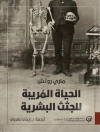In ‘The Children of the Poor, ‘ Jacob A. Riis offers a poignant social commentary on the lives of impoverished children in late 19th-century America. With a blend of journalistic rigor and vivid storytelling, Riis employs vivid imagery and firsthand accounts to illuminate the harsh realities faced by these children, from squalid living conditions to neglect and exploitation. The book is not merely a collection of observations; it serves as a clarion call for social reform, contextualizing the plight of poor children within the broader framework of American society, industrialization, and urbanization of the era. Riis’s use of photography alongside his text enhances the emotional weight of his narrative, allowing readers to visually confront the stark conditions he so desperately seeks to change. Jacob A. Riis, a Danish immigrant turned journalist and social reformer, was deeply influenced by his own experiences of poverty and hardship. Arriving in America with little to his name, Riis became a passionate advocate for the voiceless, leveraging his platform to expose the dire circumstances of the urban poor. His background and empathy for the marginalized underpin the urgent tone of ‘The Children of the Poor, ‘ reflecting his belief in the power of awareness to foster change. I highly recommend ‘The Children of the Poor’ to those interested in social justice, history, and the human condition. Riis’s evocative prose and compelling narratives will not only captivate readers but also encourage critical reflection on contemporary issues of poverty and child welfare. This book is essential for anyone who seeks to understand the historical trajectories of inequality and the enduring challenge of advocating for those who cannot advocate for themselves.
Yazar hakkında
Jacob August Riis (1849 – 1914) was a Danish-American journalist, social reformer, and photographer who became a pioneer in utilizing photography to shed light on the abject conditions of the urban poor in America. A seminal figure in muckraking journalism, Riis is best known for his book ‘How the Other Half Lives’ (1890), which brought attention to the squalid living conditions in New York City tenements. His other notable work, ‘The Children of the Poor’ (1892), offers a poignant continuation of his earlier investigations by focusing specifically on the plight of impoverished children. Combining narrative and investigative journalism with evocative photography, Riis’s work helped to spearhead progressive reforms in housing policy and child labor laws. His literary style interweaves his photographic evidence with emotive storytelling, leveraging his personal experiences as an immigrant and reporter to draw attention to social inequities. Riis’s impact on both journalism and social policy at the turn of the 20th century marked him as a key figure in the Progressive Era’s efforts to improve urban life. His commitment to social justice and his innovative use of photography in advocacy establish him as a significant pioneer in the field of photojournalism.












